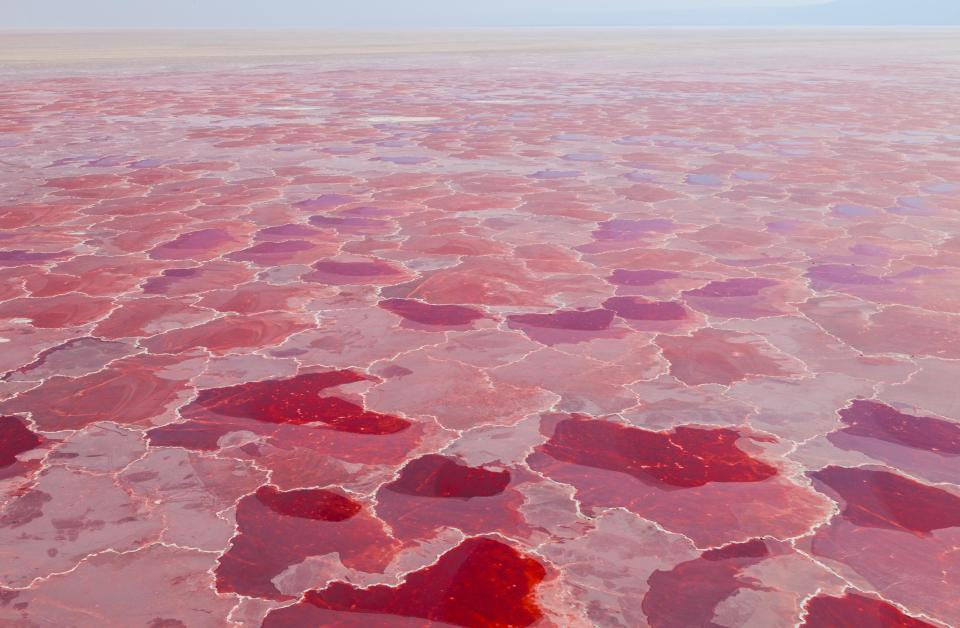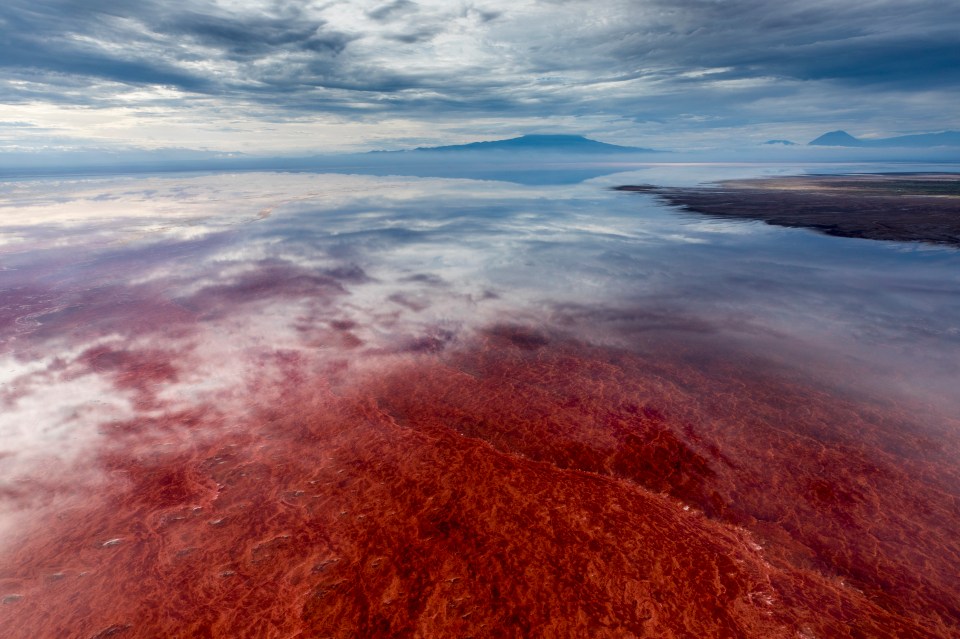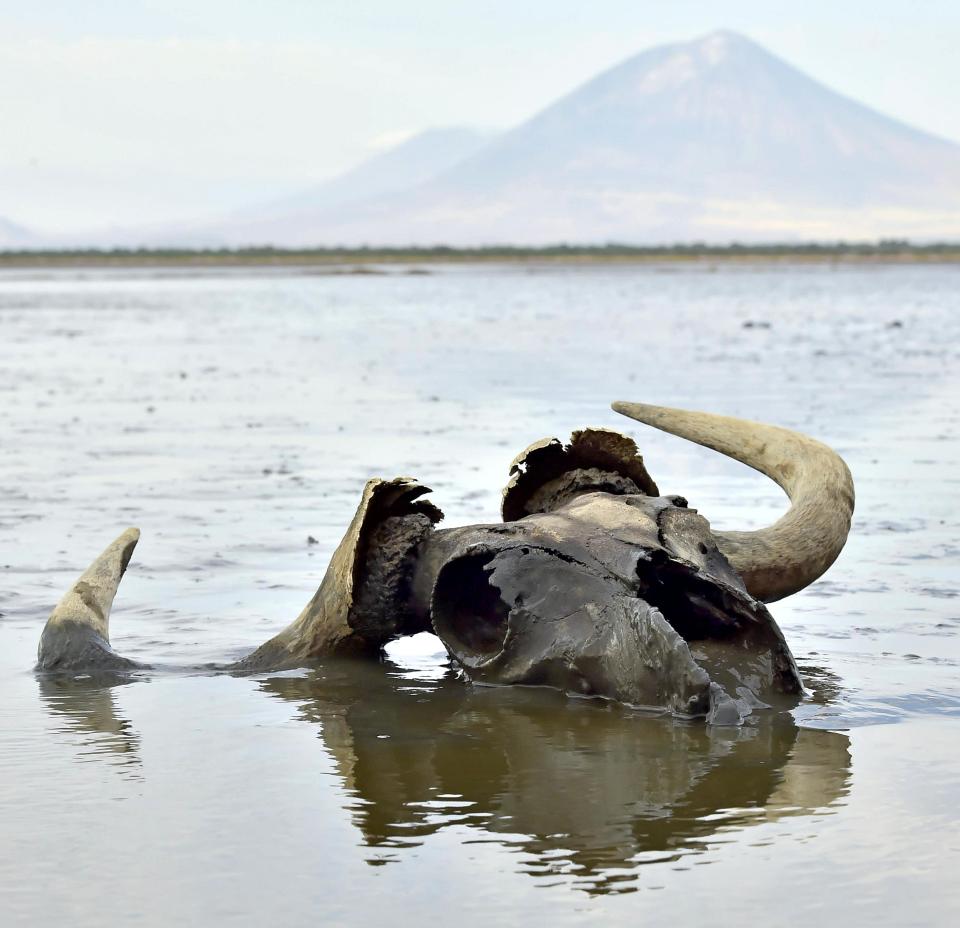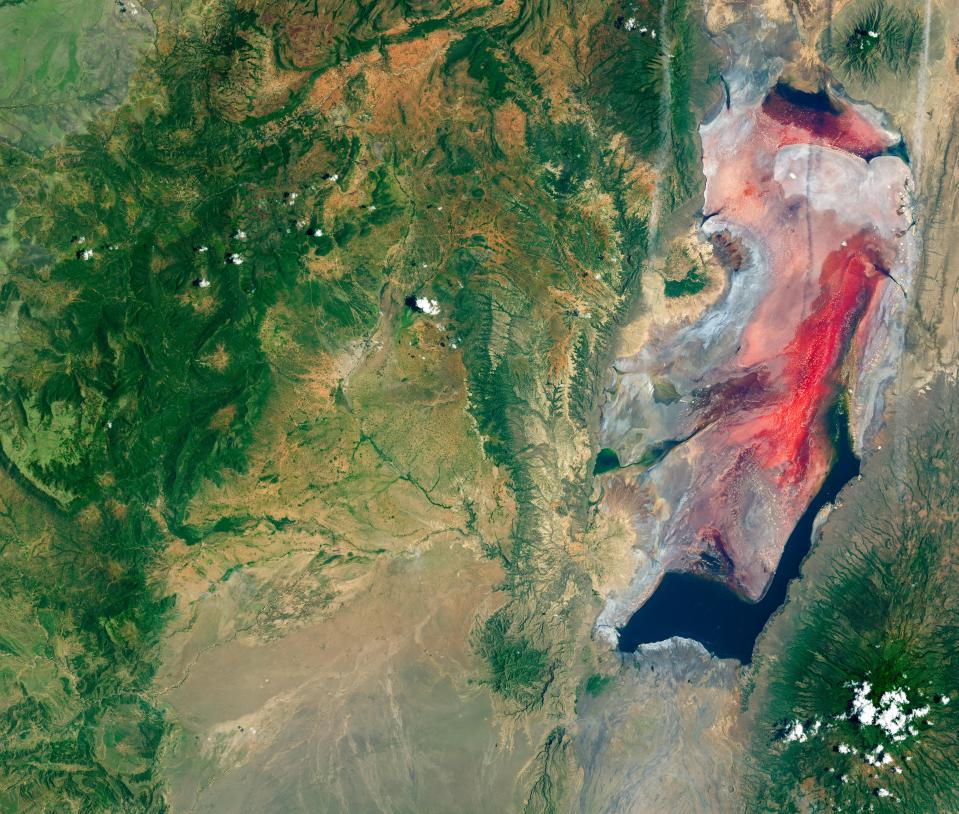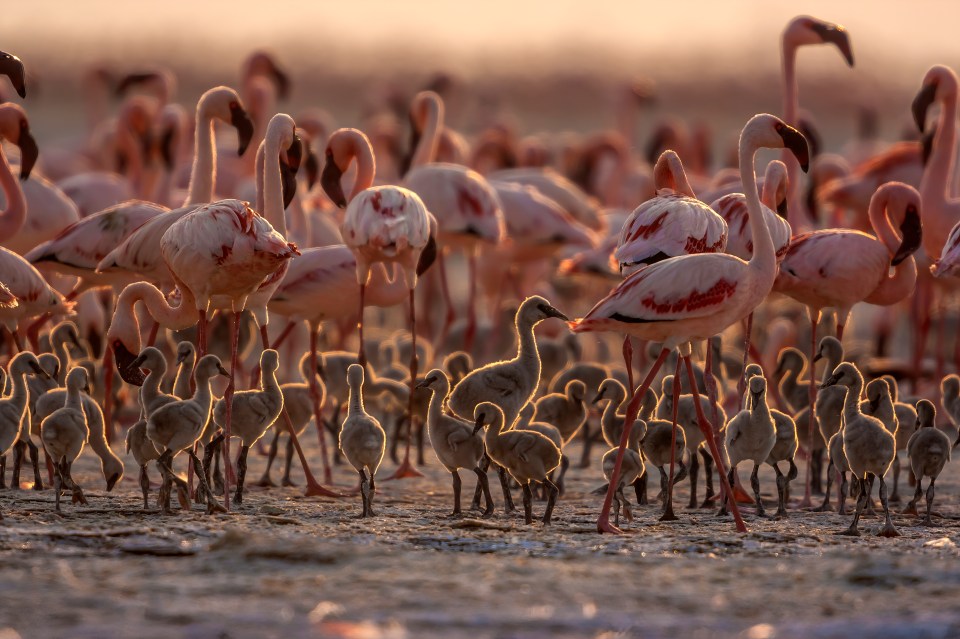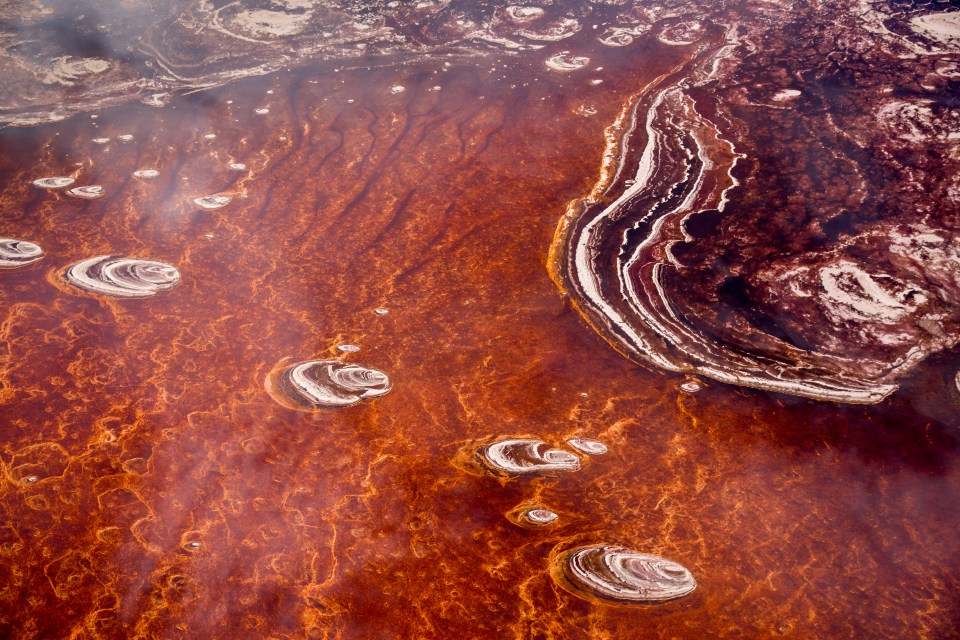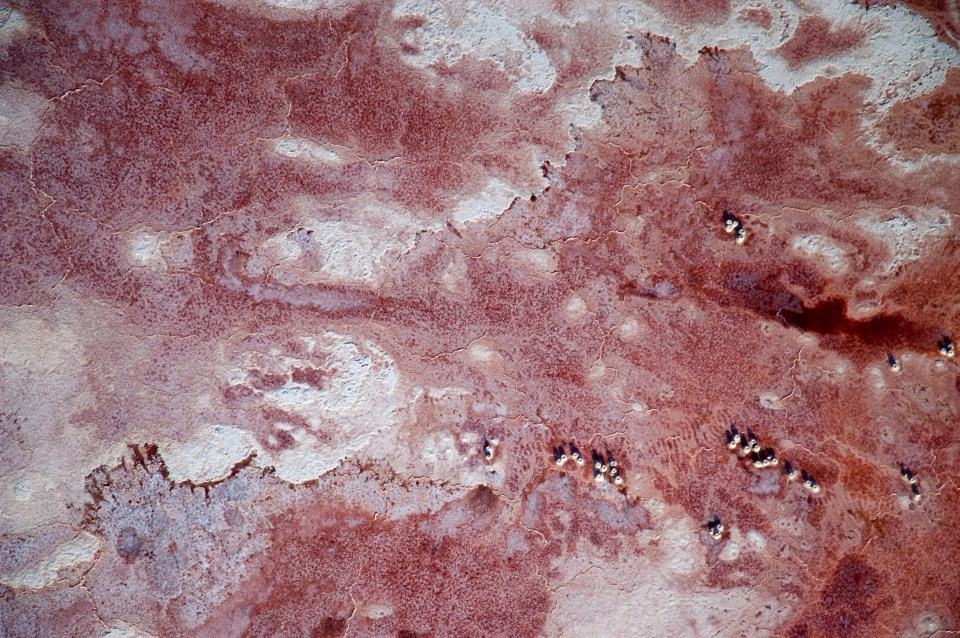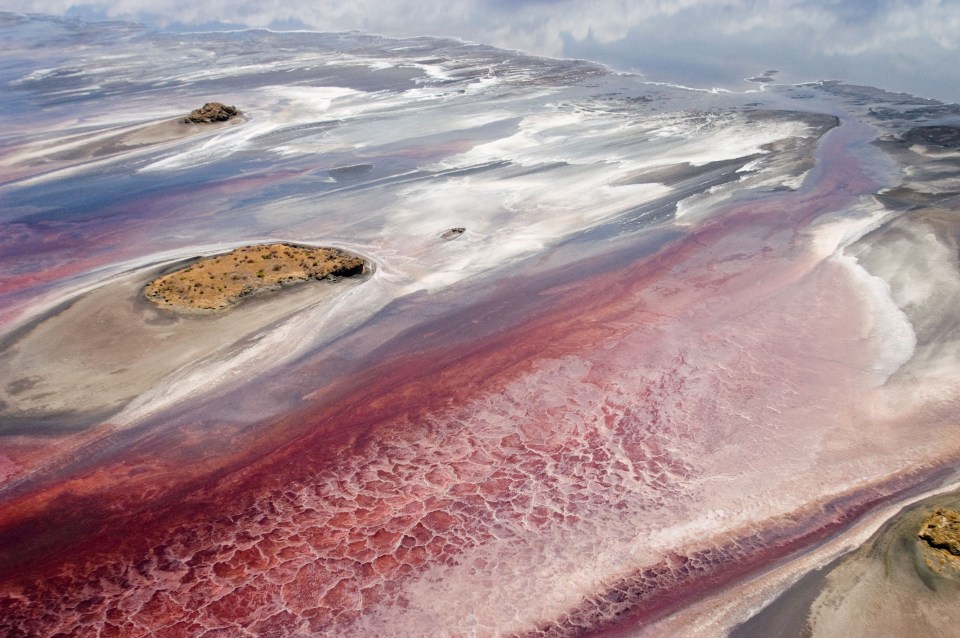IT is widely regarded as one of the world’s most beautiful lakes – owed to its unique reddish pink colour.
But tourists must not swim in it, and the water is so harsh that it can turn animals to ‘stone’.
Lake Natron is primarily located in Tanzania, but the 56km-long body of water also stretches into Kenya.
The isolated lake lays in the shadow of the active 7,650feet-tall Ol Doinyo Lengai – or ‘Mountain of God’ – volcano.
Its pink hue is a result of a type of algae, called cyanobacteria, of which the lake is brimming.
The algae is drawn to the lake’s mineral-rich water – minerals which host their own, unique, risks to life.
READ MORE ON WEIRD SCIENCE
Although the bacteria alone is deadly, releasing a chemical that damages the cells, nervous system, and livers of most animals that consume it.
Many of the birds and animals that drink from Lake Natron wind up dead.
The water is pumped full of minerals – mostly sodium carbonate which was once used in Egyptian mummification and other salts – born from hot springs.
However, unlike the famous Great Salt Lake and the Dead Sea that are a hit with tourists, Lake Natron has extremely alkaline water.
Its pH levels are almost 10.5 – as high as that of ammonia, which can cause burns.
The creatures that succumb to the lake’s deadly properties and perish in the water are eventually calcified.
They turn into stone-like mummies, with their carcasses preserved by the chemicals in the water.
A safe haven – for some
The area gets so hot, that the temperature of the water can also reach up to 60 degrees Celsius.
Just 400mm of rain falls on Lake Natron each year, and much of that is ‘phantom rain’ which evaporate before hitting the surface.
Only a few lifeforms can survive these extreme conditions, like the bacteria haloarchaea, and the fish species Alcolapia latilabris.
Yet, Lake Natron is a key breeding site for the Lesser Flamingo, which have adapted to the harsh chemicals.
The toxic water has actually become a safe haven for the flamingo, as it successfully keeps predators at bay.
